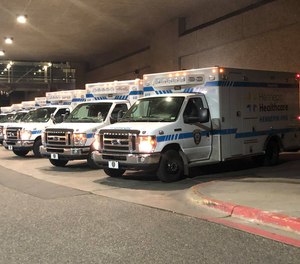
Detailing grant programs that focus on an agency’s specific needs as it navigates through an ongoing pandemic and budget shortfalls
By EMSGrantsHelp staff
When it comes to securing funding through grants, many EMS agencies and service providers are already familiar with the Assistance to Firefighters Grant (AFG) and the Rural Emergency Medical Services Training Grant. AFG is key in providing not only fire departments with needed equipment and training, but funds non-affiliated EMS organizations as well. Even though this program provides a great funding opportunity, a small percentage of awards are allocated to non-affiliated EMS organizations.
The Rural Emergency Medical Services Training Grant is a recent result of the Siren Act , which supports public and non-profit rural EMS agencies so they can recruit and train staff along, with procuring some eligible equipment. This is a great program; however, as with any federal program, there are specific deliverables that must be met. This program’s funding is relatively low; only 27 agencies were awarded in 2020.
Though there have been successful calls to increase funding for these federal grant programs, EMS agencies are experiencing the long-term effects of the pandemic. This includes dwindling revenue sources, a lack of funding to purchase needed equipment, low recruitment numbers, and concerns for current first responders and their mental health, along with the need to continue to train and maintain their physical safety.
While still considering the federal grant programs above, it is important for agencies to be aware of additional grant programs that are available to them. Below are examples of potential grant programs that focus on an agency’s specific needs as they navigate through an ongoing pandemic and budget shortfalls.
Recruitment and retention is an ongoing issue for most public safety agencies that has been exacerbated by the pandemic. There are many non-traditional programs that an agency may not look for during its grant search.
For example, the Delta Region Community Health Systems Development Program focuses on communities, “identifying and addressing healthcare needs while strengthening the local healthcare system.” Those eligible to apply include small rural hospitals, rural health clinics and other healthcare organizations located in the Delta Regional Authority designated counties and parishes. One eligible program activity is the Emergency Medical Services Project, which aims to “create a local coordinated system of care that includes community joint partners working in collaboration with first responders.” This program offers an assessment in identifying opportunities to improve processes and enhance coordination of services.
2021 EMS Trend Report: Redefining adaptability, resilience and growth
The impact COVID-19 had, and didn’t have, the changes we’re embracing and the change providers want to see
Another program is the New Mexico Health Service Corps Stipend Program . This program, “places and offers financial assistance to designated health professionals in rural and medically underserved areas of the state.”
Additional programs include the Oregon Rural Volunteer EMS Provider Tax Credit and the Minnesota Dual-Training Grant .
Throughout the COVID-19 pandemic, first responders are still charged with responding to and mitigating the effects of the coronavirus. With this, responders are also met with negative impacts to their mental health, and overall physical health and wellness. When searching for safety and wellness programs, focusing on foundations is key to expanding an agency’s funding opportunities. Many foundations focus specifically on mental health and wellness. For example, the Rocky Mountain Power Foundation lists priorities under Safety/Wellness for “Addiction, disability resources, disaster relief, domestic violence, first responders, food insecurity, healthcare accessibility, homeless support, mental health, public safety initiatives, veteran organizations, wellness and preventative care.” The next deadline is Dec. 15, 2021.
Another program is Colorado Emergency Medical and Trauma Service Provider Grants . This program’s Provider Grants offers funding for EMS vehicles , communications, data collection, EMS and trauma equipment, injury prevention, personnel and services, and recruitment and retention.
Throughout this past year and a half, training opportunities and equipment needs may not have been addressed due to budget shortfalls or a lack of time and resources to pursue. Below is a list of grant programs to review:
It is important to note that these programs are state-specific and require reaching out to the grant program’s administrator. Though the search varies from state to state, most states’ public health agencies focus on EMS-related funding opportunities.
Copyright © 2025 EmsGrantsHelp.com. All rights reserved.

